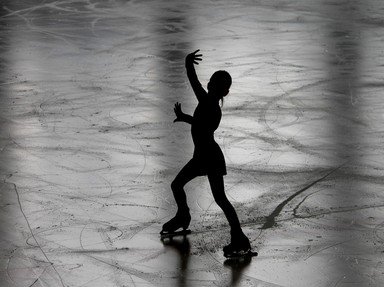Quiz Answer Key and Fun Facts
1. How many competitions made up the Grand Prix of Figure Skating?
2. Not including the Final, how many competitions were skaters allowed to participate in?
3. The Grand Prix is open to
4. Which change was made for the 2003 Grand Prix (compared to previous years)?
5. Which organization sponsored the Grand Prix of Figure Skating?
6. What countries had the most competitors in the 2003 Grand Prix Final (Note: a pairs team or dance team counts as one competitor)?
7. Which country had competitors in all four portions of the Final: Men's Singles, Ladies' Singles, Pairs, and Dance?
8. Which division only had five skaters or teams compete in the Final, instead of the usual six?
9. Both the Men's and Ladies' Finals had surprising results. Who won medals in the Ladies' Singles?
10. Who won medals in the Men's Singles?
Source: Author
julia103
This quiz was reviewed by FunTrivia editor
Nightmare before going online.
Any errors found in FunTrivia content are routinely corrected through our feedback system.
